Table of Contents
Introduction to Olive Oil Types
Olive oil comes in several distinct types, each with unique characteristics determined by production methods and quality standards. Understanding these differences is essential for selecting the right oil for cooking, baking, or raw applications. The International Olive Council (IOC) and USDA define these categories based on acidity levels, processing methods, and sensory qualities.
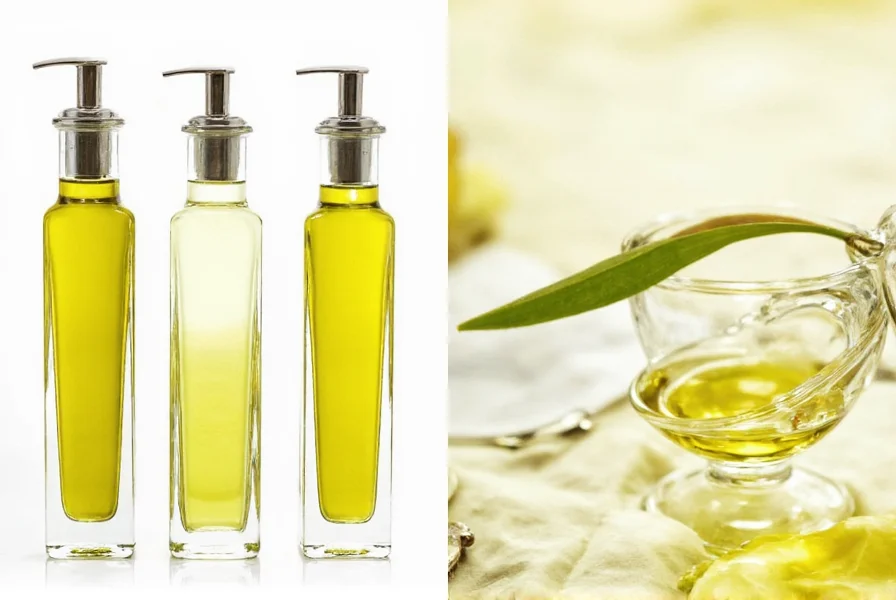
Olive Oil Types Comparison
| Type | Acidity Level | Smoke Point | Best Uses | Flavor Profile |
|---|---|---|---|---|
| Extra Virgin Olive Oil (EVOO) | ≤ 0.8% | 375-410°F (190-210°C) | Salads, dressings, dips, finishing dishes | Fruity, peppery, robust |
| Virgin Olive Oil | 0.8-2.0% | 390-420°F (199-216°C) | Medium-heat cooking, baking | Milder, less complex than EVOO |
| Refined Olive Oil | ≤ 0.3% (after refining) | 465°F (240°C) | Frying, high-heat cooking | Neutral, minimal flavor |
| Pure Olive Oil | Blended (refined + virgin) | 410-460°F (210-238°C) | General cooking, sautéing | Mild, balanced |
| Light Olive Oil | Highly refined | 465°F (240°C) | Baking, frying where flavor shouldn't dominate | Very neutral, light texture |
Source: International Olive Council (IOC) standards
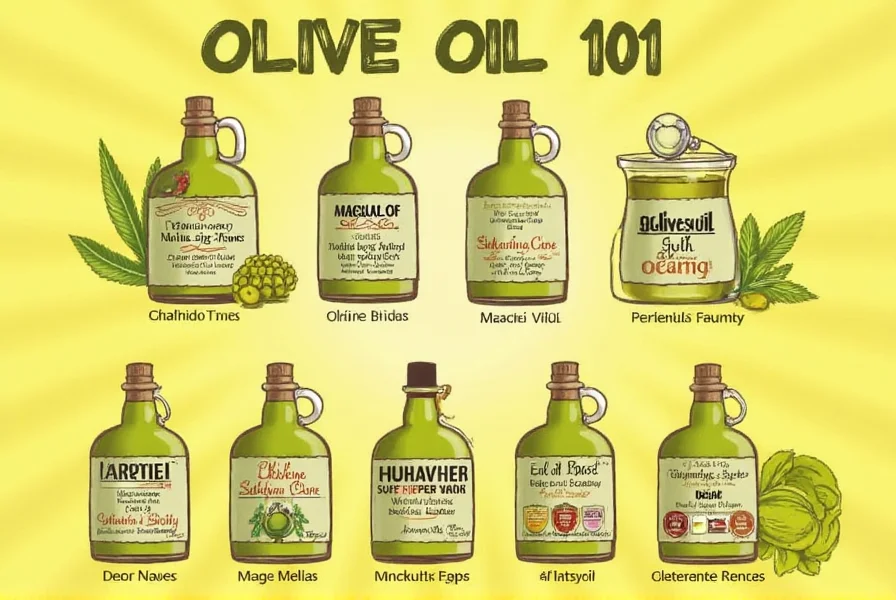
Cooking with Olive Oil: Best Practices
Using the right olive oil for each cooking method maximizes flavor and nutritional benefits:
- Raw applications: Use Extra Virgin Olive Oil (EVOO) for salads, dips, and drizzling. Heat destroys its delicate flavor compounds.
- Medium-heat cooking: Virgin Olive Oil works well for sautéing vegetables or light frying (under 375°F/190°C).
- High-heat cooking: Refined or Light Olive Oil is ideal for frying, roasting, or baking due to high smoke points and neutral flavors.
- Storage: Keep all olive oils in dark glass bottles away from heat and light. Refrigeration isn't recommended as it causes clouding and alters texture.
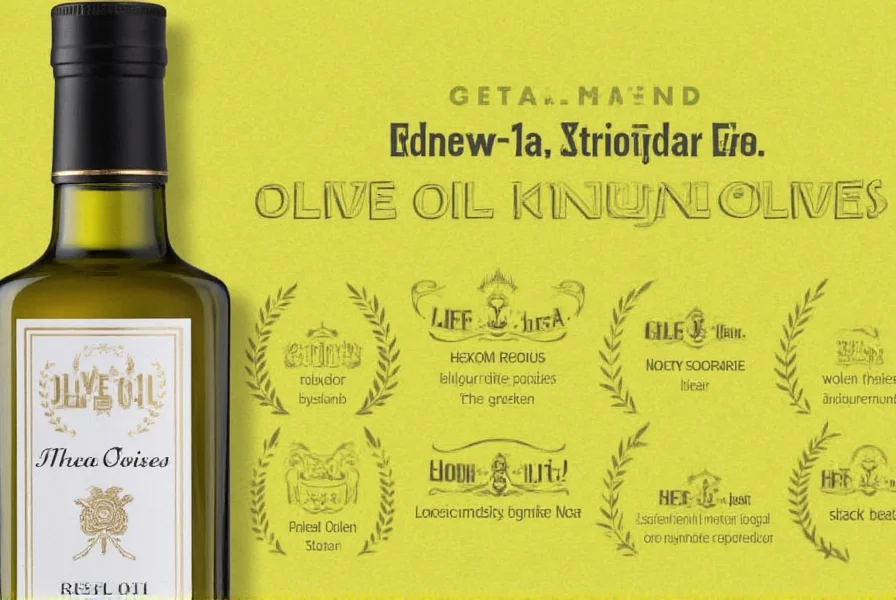
How to Choose High-Quality Olive Oil
Follow these expert guidelines to avoid counterfeit products and ensure quality:
Key Quality Indicators
- Harvest date: Look for oils with a harvest date (not just "best by" date). Freshness matters—opt for oils harvested within the past 12 months.
- Packaging: Choose dark glass bottles or opaque containers to protect from light degradation. Avoid clear plastic bottles.
- Certifications: Look for IOC, USDA Organic, California Olive Oil Council (COOC), or PDO/PGI certifications for authenticity.
- Acidity level: EVOO should have ≤0.8% acidity. Check labels for this specification.
How to Verify Authenticity
Authentic Extra Virgin Olive Oil should:
- Have a fresh, fruity aroma with notes of grass, green apple, or tomato leaf
- Produce a slight peppery sensation in the throat when tasted
- Be priced appropriately (real EVOO costs $10-$20 per 500ml)
- Have a clear harvest date and certification from reputable organizations
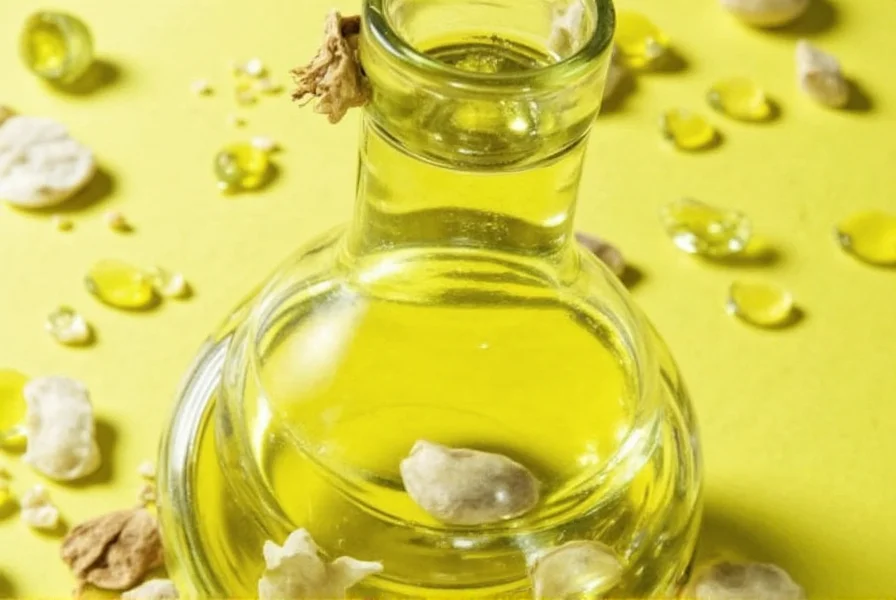
Frequently Asked Questions
What's the difference between extra virgin and virgin olive oil?
Extra Virgin Olive Oil (EVOO) is made from the first cold pressing of olives with ≤0.8% acidity and retains maximum flavor and antioxidants. Virgin Olive Oil has slightly higher acidity (0.8-2.0%) and milder flavor. EVOO is superior for raw applications while Virgin Oil works well for medium-heat cooking.
Which olive oil is best for frying?
For frying, use Refined or Light Olive Oil with smoke points above 450°F (232°C). Extra Virgin Olive Oil (smoke point ~375°F/190°C) burns easily at high heat, losing nutritional benefits and developing bitter flavors.
Does "light" olive oil have fewer calories?
No. "Light" refers only to flavor and color intensity, not calories. All olive oils contain 120 calories per tablespoon. Light Olive Oil is highly refined for neutral taste in baking or frying.
How long does olive oil last?
Unopened olive oil maintains quality for 18-24 months from bottling. Once opened, use within 3-6 months. Store in cool, dark places away from heat and light. EVOO has a shorter shelf life (12-18 months) due to higher polyphenol content.
Why is extra virgin olive oil more expensive?
EVOO requires higher-quality olives harvested at peak ripeness, mechanical cold-pressing without heat or chemicals, strict quality controls (acidity ≤0.8%), and lower yield per olive. These factors make it more labor-intensive and costly than refined varieties.
Conclusion
Understanding olive oil types is crucial for maximizing flavor, nutrition, and cooking performance. Always match the oil type to your cooking method: use EVOO for raw applications, Virgin for medium-heat cooking, and Refined/Light for high-heat applications. Prioritize oils with clear harvest dates, proper packaging, and third-party certifications to ensure authenticity and quality. With this knowledge, you can confidently select the perfect olive oil for every culinary need.
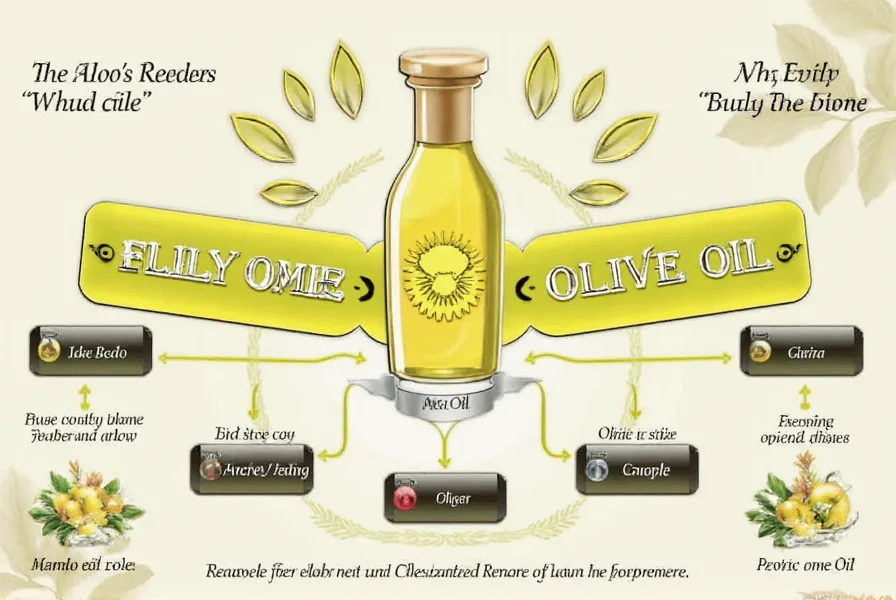

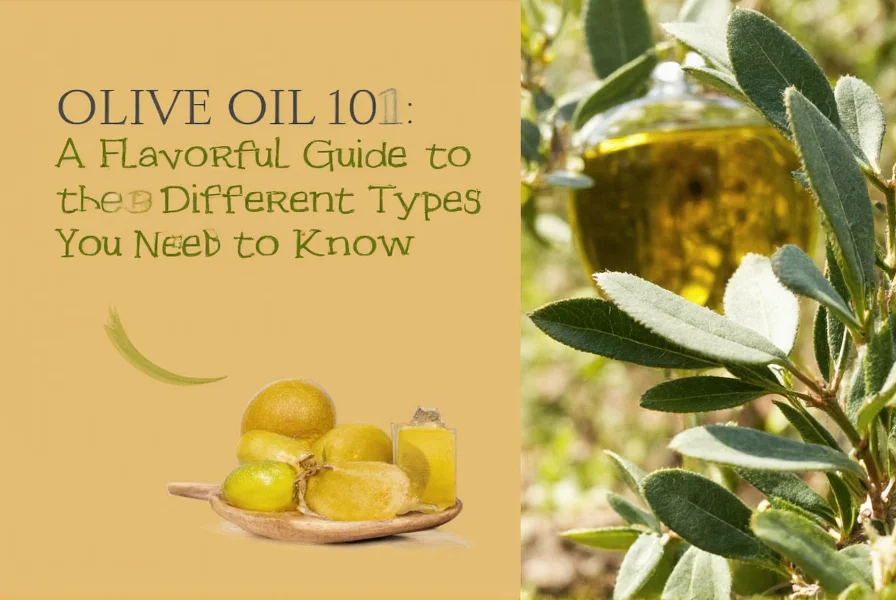









 浙公网安备
33010002000092号
浙公网安备
33010002000092号 浙B2-20120091-4
浙B2-20120091-4